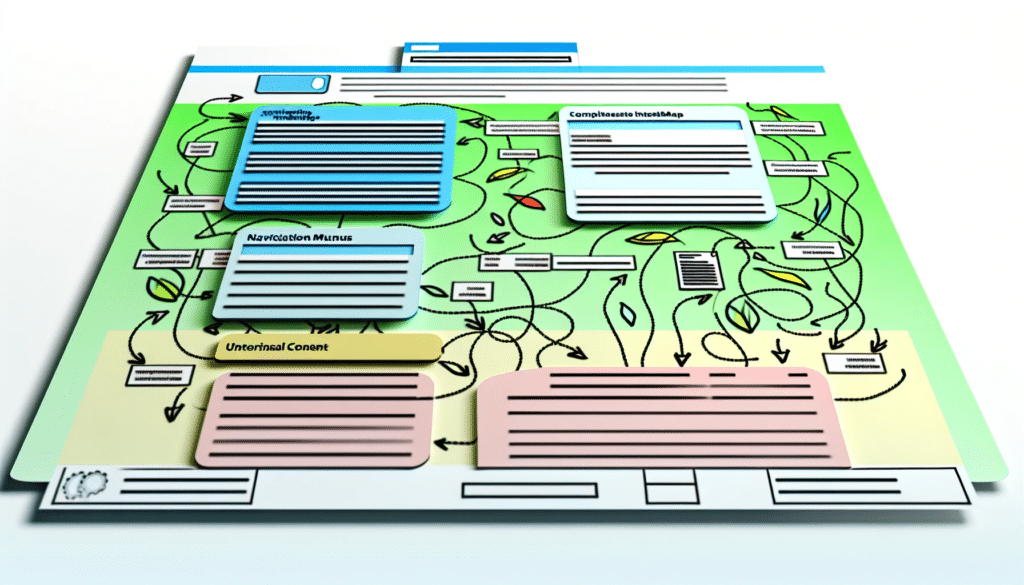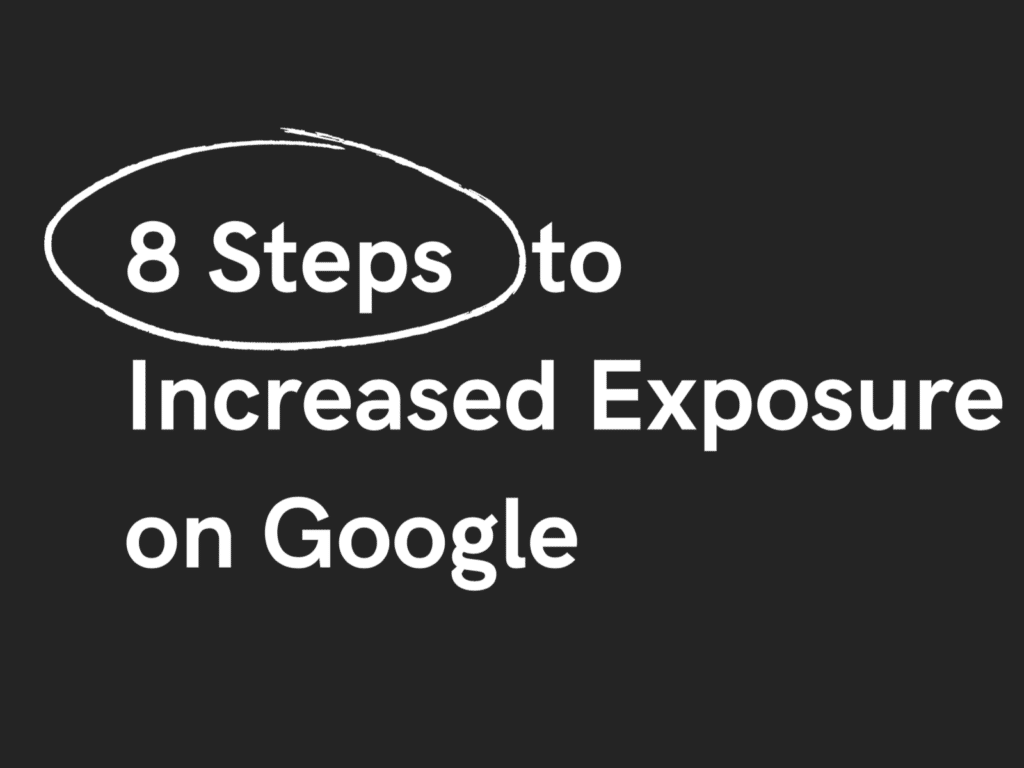
Introducing the Essential Tactics to Optimize Your Website Content
If you run a business website but aren’t seeing the amount of organic traffic and leads you expected, on-page SEO optimization could be the missing puzzle piece.
On-page SEO refers to factors you can directly control on your actual web pages, like content, URL structure, headings, and media. Improving these elements signals to Google and other search engines that your site provides value to users. In turn, you may see improved search visibility and more visitors from relevant organic searches.
But with so much misinformation out there about on page SEO, it’s tough to know where to start or what specifically you should actually be doing.
As an experienced digital marketing agency focused on lead gen and conversions, we’re sharing need-to-know on-page SEO optimization tips so you can stop wasting time and start driving real business growth.
Read on for actionable recommendations on:
- Conducting keyword research
- Optimizing meta titles and descriptions
- Improving website information architecture
- Enhancing page speed
- And more…
Understanding the Difference Between On-Page and Off-Page SEO
As you learn about optimizing your website for organic search, you’ll frequently come across the terms “on-page SEO” and “off-page SEO.” What exactly is the difference between these two approaches?
In simple terms:
On-page SEO refers to optimizing elements directly on your website, such as content, URL structure, title tags, headings, page speed, etc. These are changes you have full control over as the site owner.
Off-page SEO encompasses external signals like backlinks from other sites, social media engagement, brand mentions, and authority metrics that influence how search engines view your domain. You don’t have direct control but can influence through outreach and marketing tactics.
Our recommendation is to take a balanced approach to both facets of SEO:
- Dedicate consistent effort to improving on-site content, speed, and architecture for the visitor experience
- Build an outreach strategy to gradually earn high quality backlinks and engagement
Combining these on-page and off-page SEO factors creates a positive feedback loop where authorities like Google take notice, ultimately improving your SERP rankings and website traffic from organic searches.
Set Yourself Up for SEO Success with Keyword Research
In the world of SEO, there are thousands of tactics and best practices you could deploy. However, the secret is that most of these tactics will not move the needle for you without properly identifying relevant keywords
Without knowing which target keyword your customers are using around topics related to your business, it’s virtually impossible to create on-page content optimized for organic discovery and visibility.
That’s why we recommend using keyword research tools like Ahrefs, SEMrush, or Google’s own Keyword Planner before you begin any other SEO activities.
Here’s a simple keyword research process to follow:
- Brainstorm a list of products, services, or target keywords that prospects may search when looking for a business like yours. This helps surface initial ideas.
- Plug these seed keywords into a tool like Ahrefs to generate a comprehensive list of related keywords, along with search volume data.
- Review the full list, recording any keywords that have sufficient search volume (at least 1,000 monthly searches) and match your business offerings.
The end result is a prioritized list of high-potential SEO keywords to focus your on-page optimization efforts around. You can then incorporate these target keywords into your on page SEO content. However, it is important to incorporate these keywords naturally. Keyword stuffing is an old on-page SEO tactic that will negatively affect your search engine rankings, so it is best to minimize keyword stuffing where possible.
Craft Meta Titles and Descriptions That Captivate Clicks
Once you know which keywords you want to target, the first place to optimize them is in your page titles and meta descriptions.
These on-page elements are vital for both capturing clicks on search engine results and indicating relevancy to Google.
Follow these best practices for title tags and meta descriptions:
- Page title should be less than 60 characters, placing your most important keywords at the beginning. Keyword rich title tags tend to generate a higher click-through-rate
- Meta descriptions can be up to 160 characters, written conversationally to compel clicks
- Ensure each page on your site has a unique, keyword-enhanced title tag and meta description
- Use tools like Yoast SEO or Moz to check optimization opportunities
With compelling page titles and meta descriptions in place, you’ll better attract attention on search engine results pages while also improving on-page SEO authority signals.
Structure Your Website for Higher Discoverability

Beyond page-level elements, website information architecture and internal links are also key for on-page SEO success.
Properly structuring URLs and content helps search bots crawling your site better understand the relationships between pages. In turn, pages have an improved chance of appearing for relevant keyword searches.
Tips for an SEO-friendly site structure:
- Use descriptive URLs with hyphens instead of periods or underscores
- Structure URLs to match site hierarchy e.g. example.com/products/software
- Implement breadcrumb navigation to connect site sections
- Use internal links to cross-link related content
Following SEO-friendly information architecture and linking guidelines enhances the discoverability of your most important website pages.
Incorporate Media the RIGHT Way
Photos, videos, and graphics make content more engaging. But did you know visual media also provides hidden SEO value when optimized properly?
Integrating images, graphics, videos, and other multimedia not only helps satisfy search intent around visual queries but also improves overall on-page experience.
With the rise in visual search, establishing proper media optimization gives your content an edge over the competition.
Image Optimization
Photos and graphics don’t just make your pages visually appealing. When optimized properly, images also provide hidden SEO value.
By putting effort into two key areas – visual compression and descriptive alt text – you can improve both site speed and relevance in image search results.
First, compress large image file sizes using a tool like TinyPNG or Kraken. Smaller file sizes directly speed up load times. Pages with fast load times have higher visitor retention and stronger SEO rankings.
Second, write detailed alt text summaries for each visual asset on your site. These text descriptions tell search bots the context and subject matter of photos, and can help surface your images in google image search.
Video Optimization
Video is an incredibly engaging content medium. But did you realize optimizing video also provides SEO value for higher rankings?
- Focus on creating useful, informative videos that align to viewer search intent
- Transcribe videos and insert transcripts for text content
- Include main and secondary keywords naturally in titles and descriptions
- Embed videos directly onto relevant pages on your site
- Share video content on YouTube channel and link back to site
By actively repurposing visual content into textual assets through transcription, you give search bots more signals to properly index and surface your videos.
Trim the Fat with Page Speed Enhancements
Here’s an alarming stat: 53% of mobile site visitors will leave a page that takes over 3 seconds to load.
That makes page speed and technical SEO an essential element for both user experience AND on-page SEO authority. slow Sites frustrate visitors, leading to higher bounce rates which Google may interpret as a poor quality signal.
Here are proven ways to enhance page and site speed:
- Compress large images with TinyPNG
- Enable browser caching in HTML
- Minify CSS and JavaScript files
- Defer non-critical JS loading
- Utilize a content delivery network like Cloudflare
Shaving off even small fractions of seconds from your page load time can pay dividends through better visitor retention and SEO rankings. It’s one of the highest ROI areas to focus your on-page efforts.
Wrapping Up On-Page SEO Best Practices
By now you should have a solid grasp of tactical on-page SEO and how it impacts organic search visibility.
To recap, you should be:
- Conducting keyword research to inform content
- Optimizing title tags and meta descriptions
- Structuring site architecture for discoverability
- Enhancing media elements for added value
- Improving page speed metrics
Focus on consistently executing these core areas of on-page SEO, and you’ll notice your website and blog content performing better in relevant search results over time.
Have any lingering questions about executing technical SEO tactics? As a data-driven marketing agency, we live and breathe this stuff. Reach out anytime and we’re happy to help strategize winning solutions for your brand.



